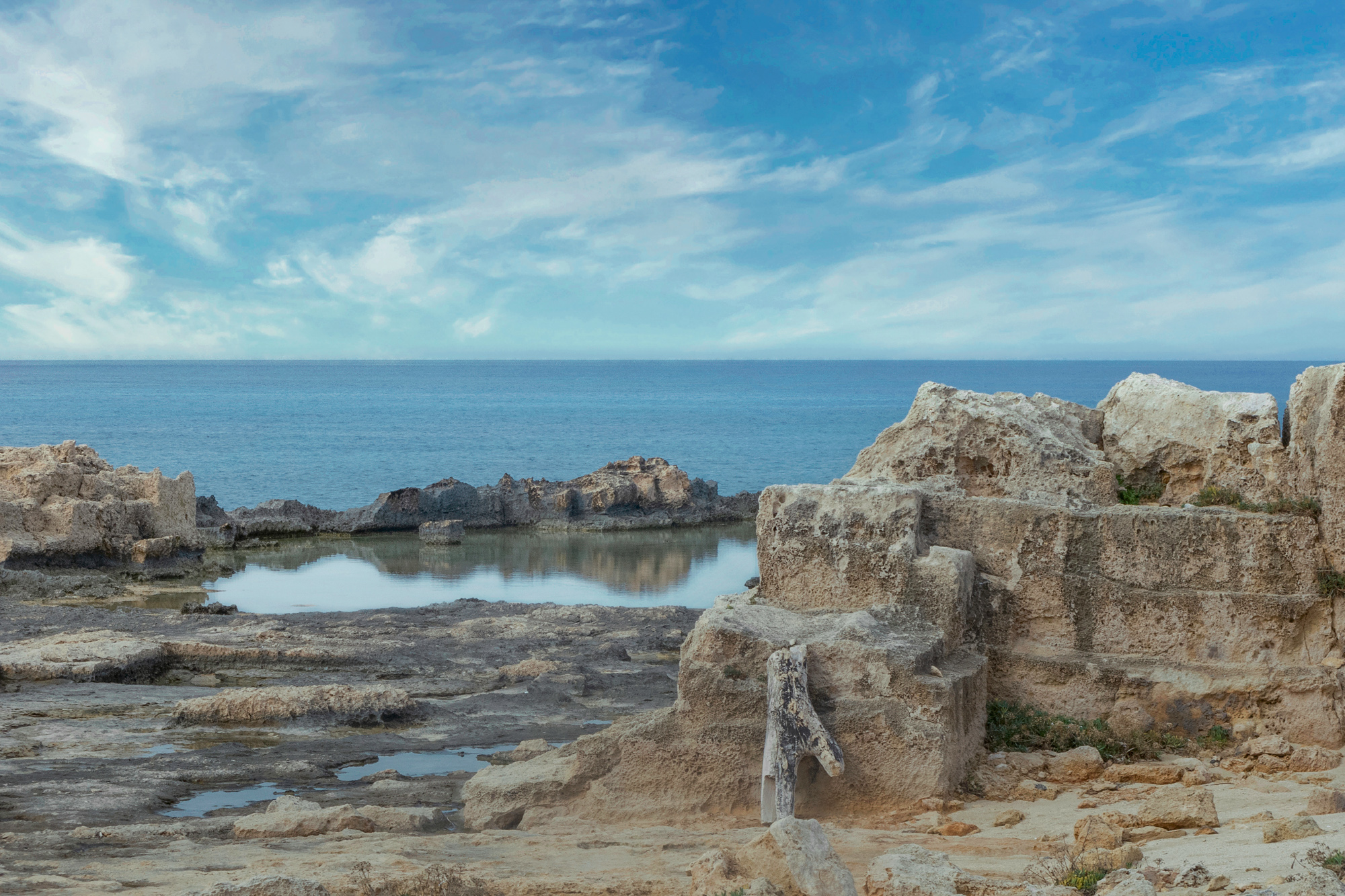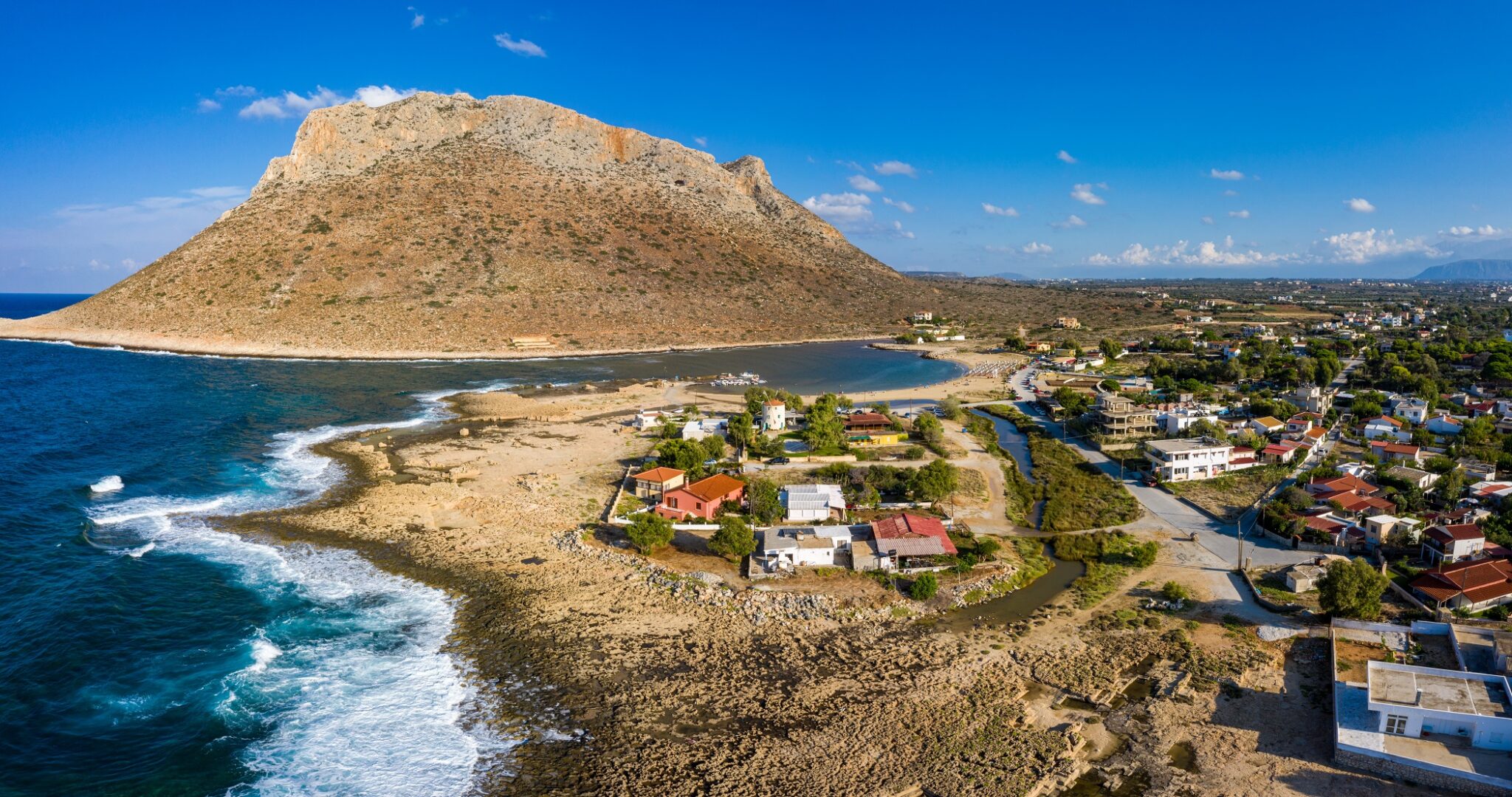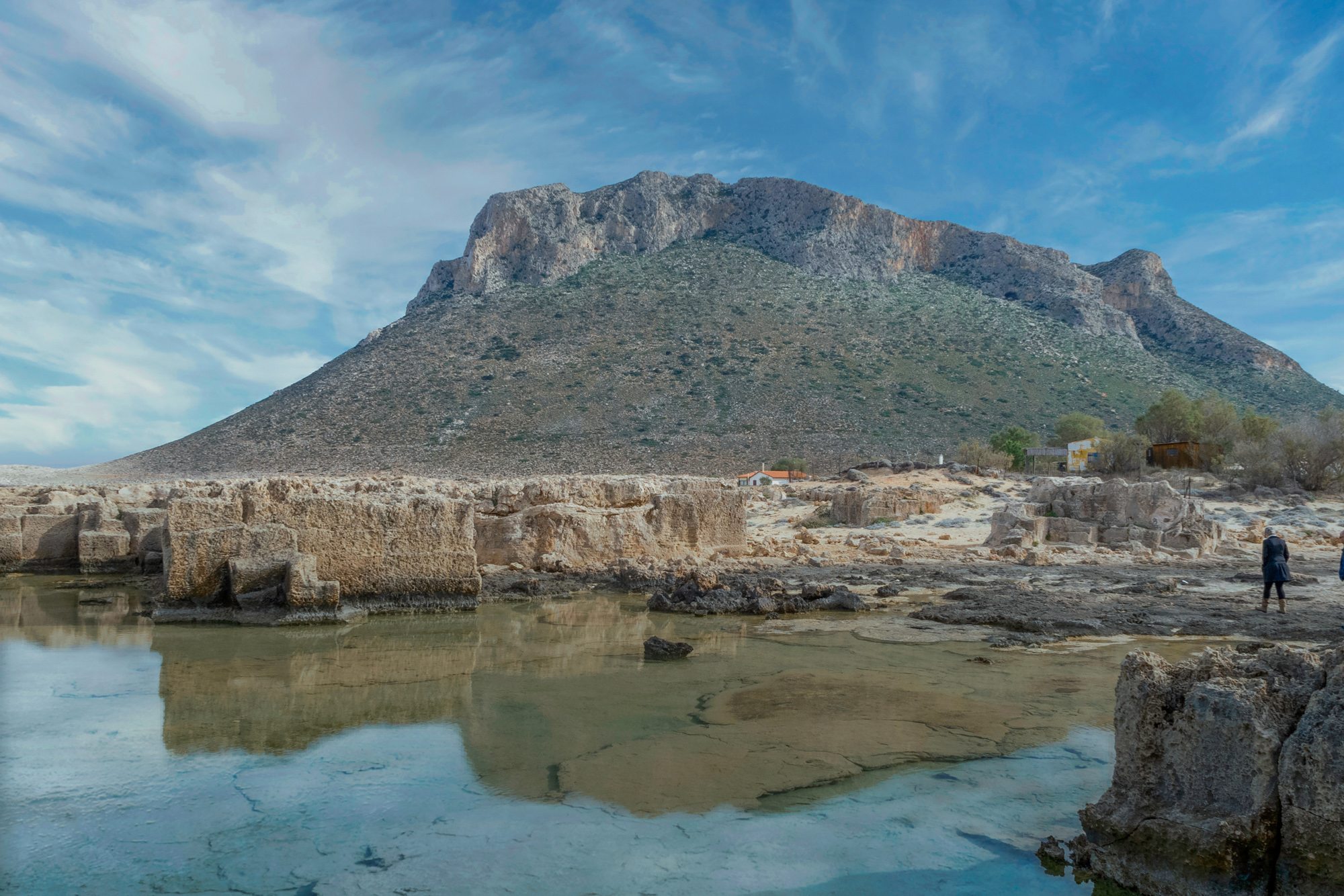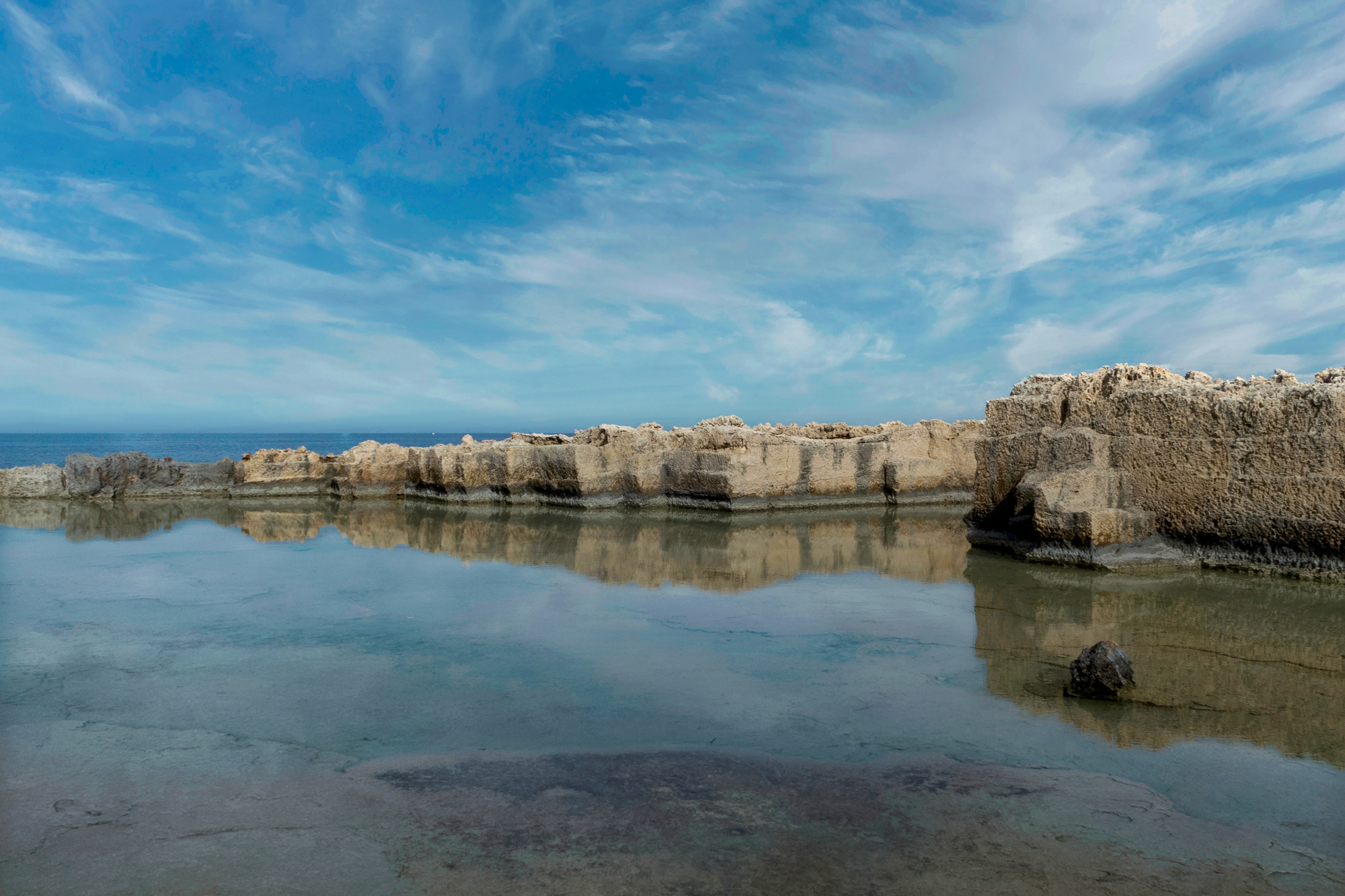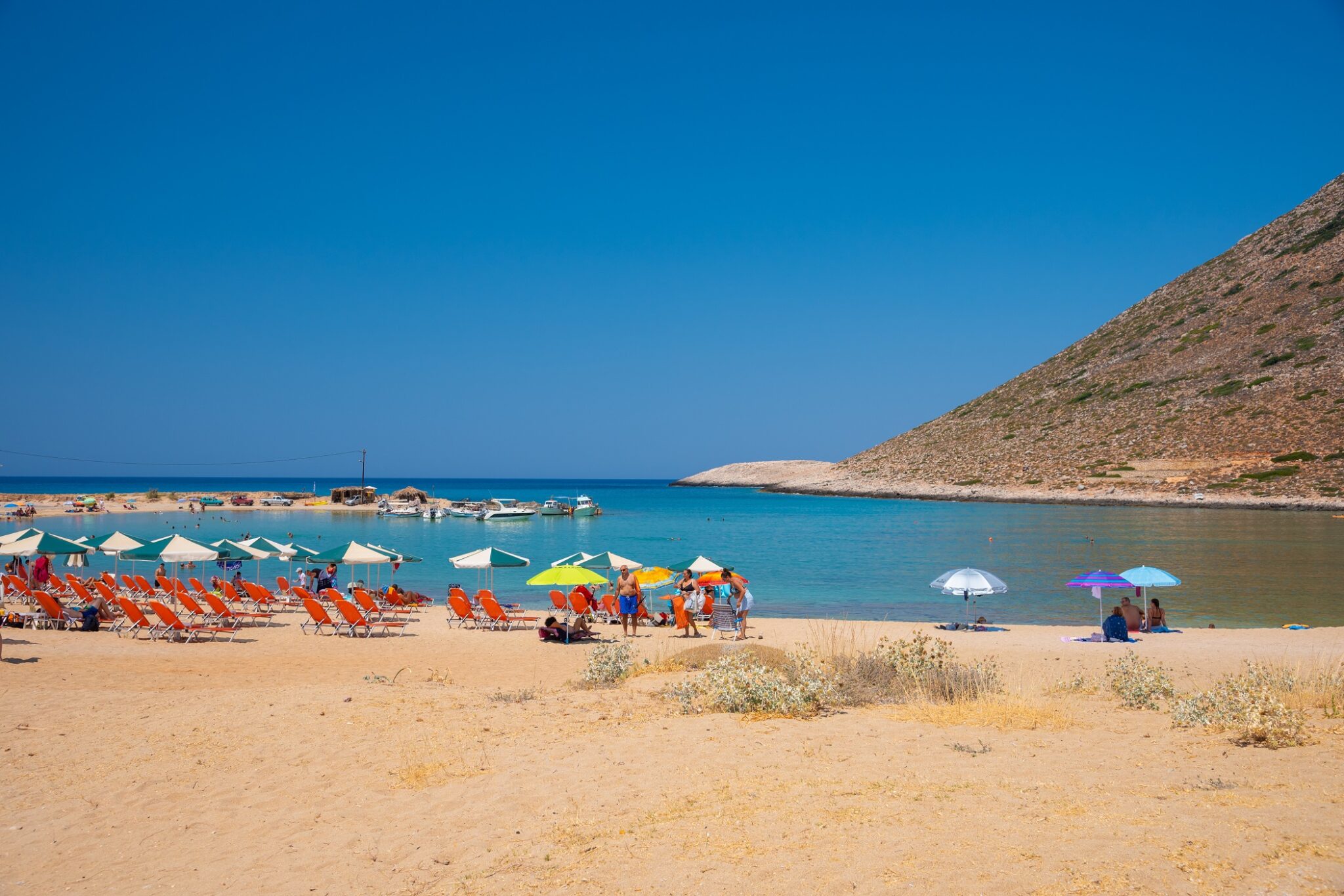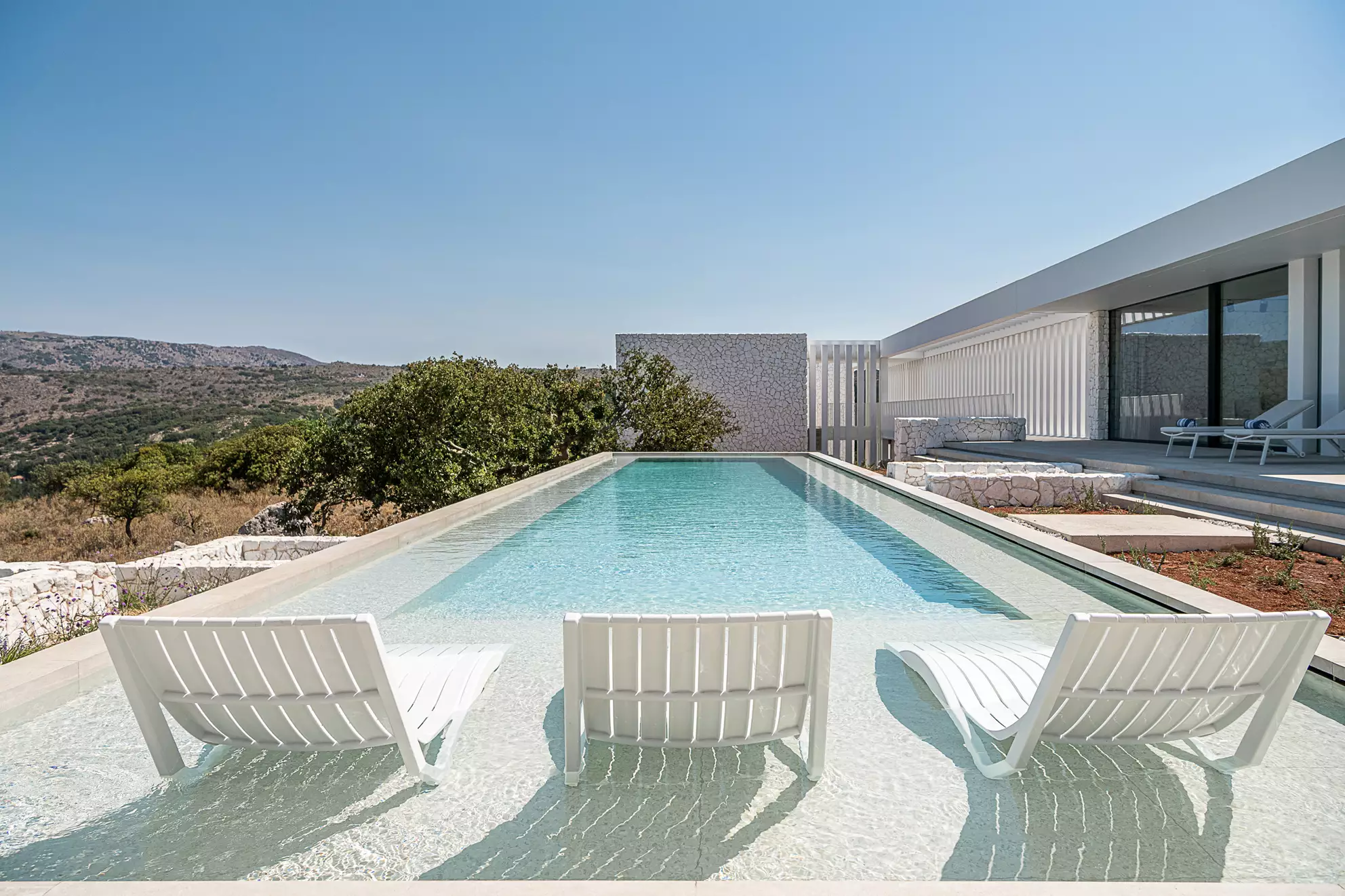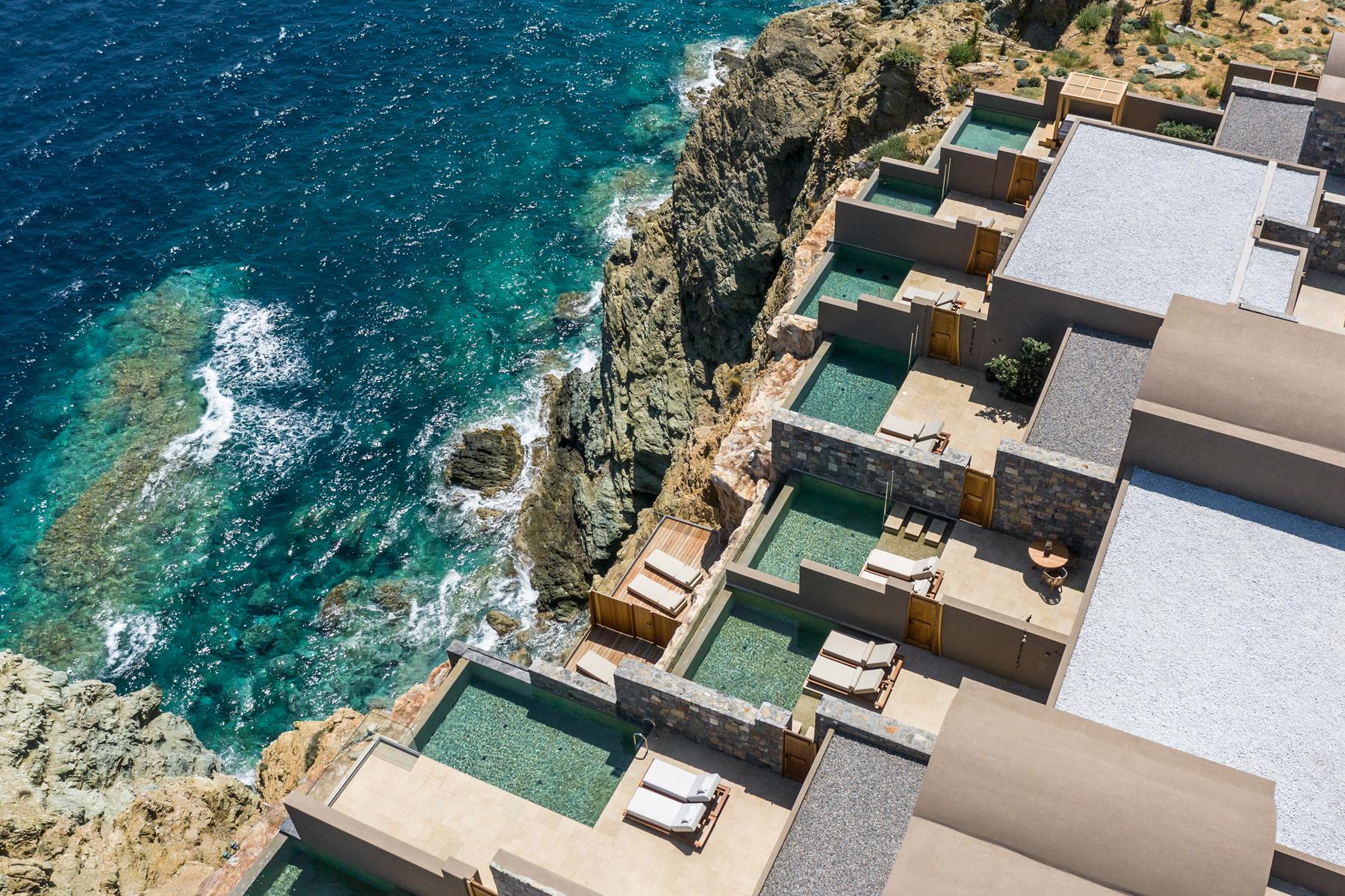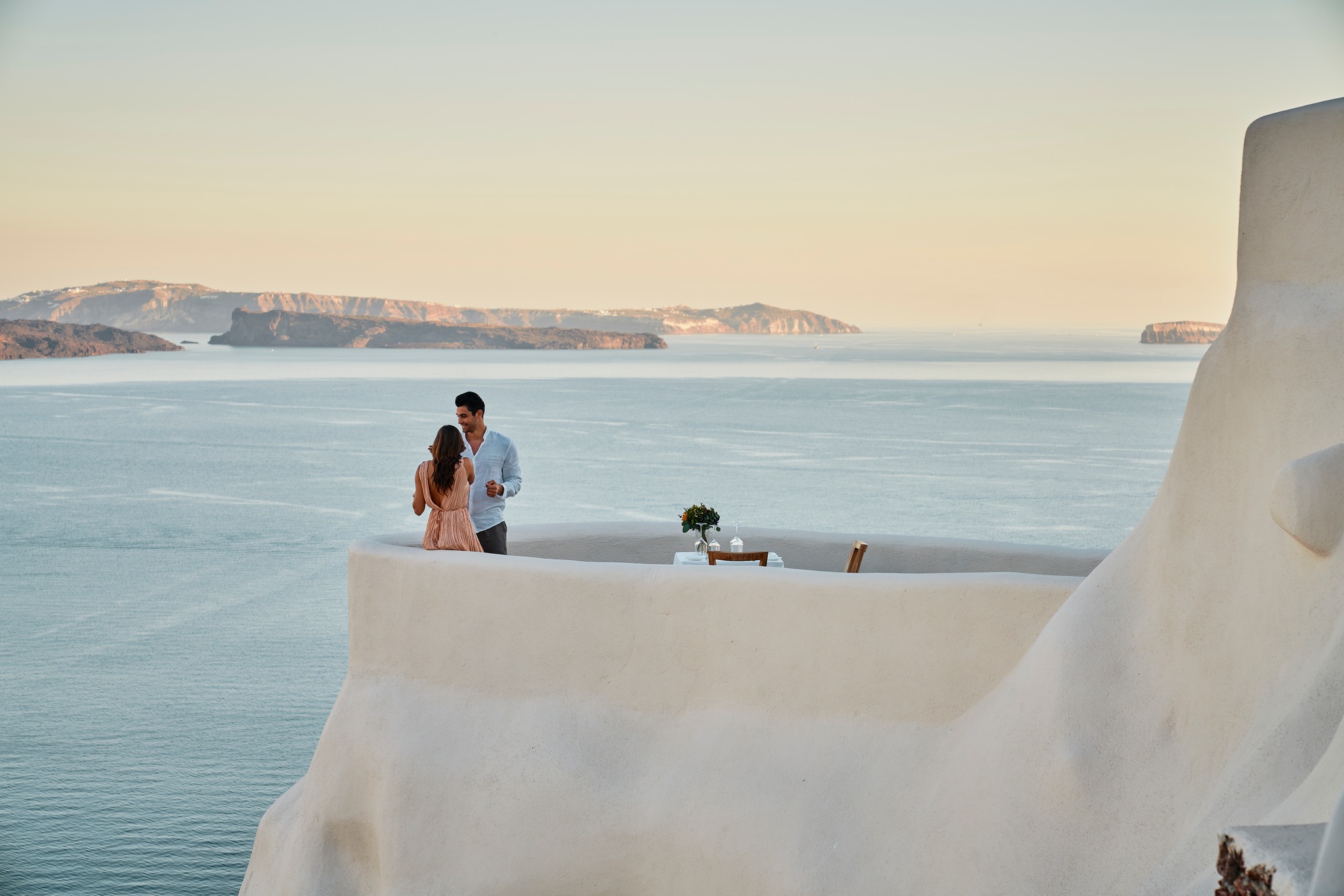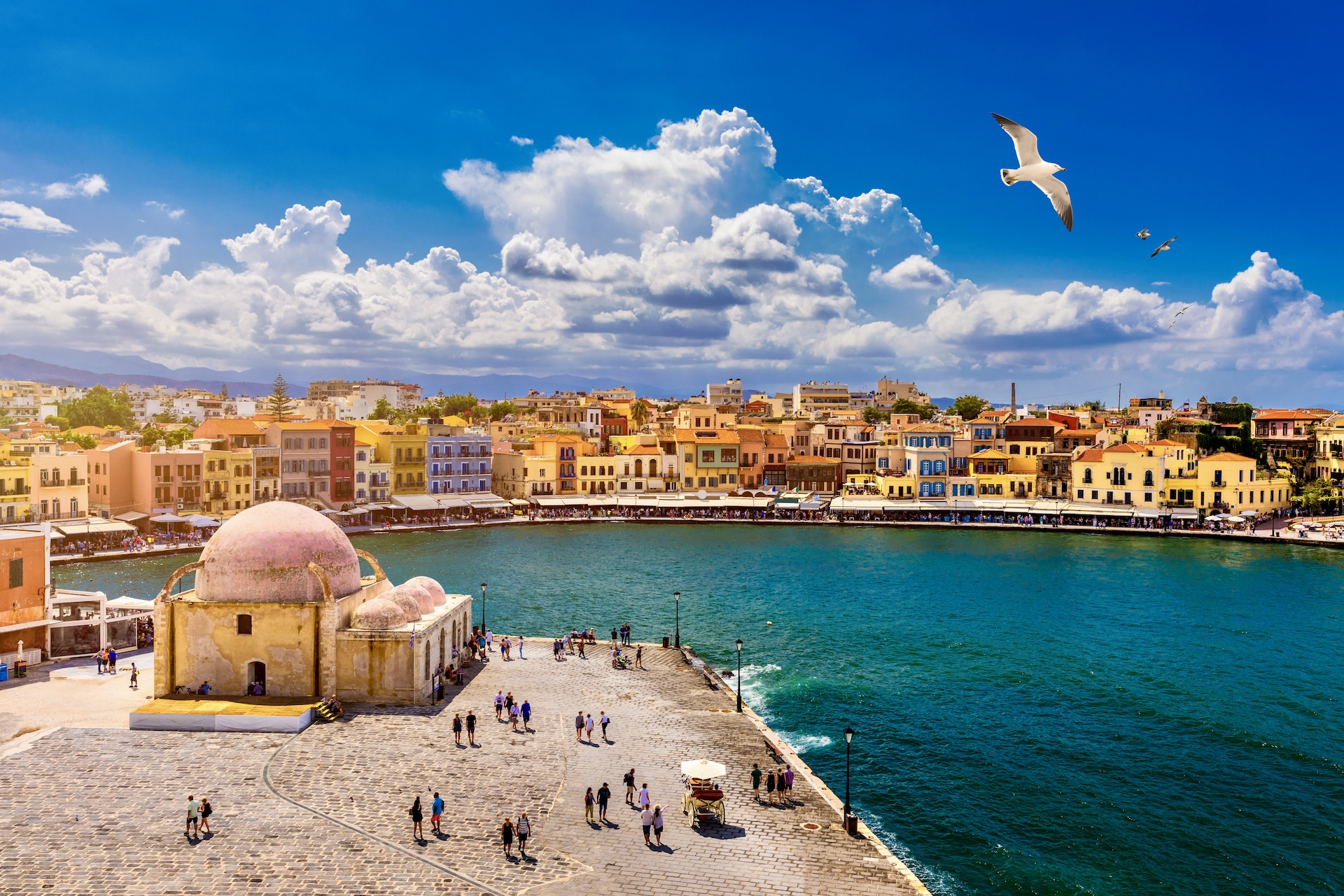White sand and superb shallow waters of bluish, light green shades are attributes that would boost the profile of any Greek mainland or island beach. Cretan beach Stavros is endowed with extra qualities, raising its standards even higher.
A double beach at the Cretan seaside village of the same name, Stavros is situated 17 km northeast of Hania. The beach, split into two sections by the Trahili peninsula, features the remains of an old quarry that flourished during Crete’s period of Venetian rule. A gigantic rock rising opposite the Stavros village harbour is another trademark feature.
Stavros beach gained major international fame during the 1960s, when it was chosen as a set for Michalis Cacoyannis’ hit film “Zorba the Greek” – the film was nominated for seven Oscars, winning three – but was later forgotten, drawing mostly locals and travellers acquainted with the wider Akrotiri area. In more recent years, however, the small bay of Stavros has, once again, experienced a new twist of fate, attracting a considerable number of visitors every summer. Tourism infrastructure has been developed, transforming this former fishing village.
Double beach, Venetian-era quarry, Zorbas the Greek
The double beach’s two sections are often referred to as the western and eastern sides. The east side is a good choice for families with young children as its waters are shallow, while the west side tends to be slightly quieter. Both sides attract big numbers of people on weekends during July and August.
The beach linked to the Nerokambos river mouth, east of the village, is considered the primary beach. It resembles a lagoon and features a white sandy shore with shallow, crystal-clear waters. This bay is well protected from the winds. Of course, the double beach’s other section, 200 metres northwest, shares similar traits.
The gigantic rock standing directly opposite the Stavros village harbour and main beach is Mount Vardies’ coastal section, which, in the eyes of many, seems camel-shaped. A trail from here leads to the top of this section, offering a superb view of Stavros, as well as to a cave.
The beach location’s other trademark feature, the Venetian-era quarry’s remains, on the Trahili peninsula, is neither very conspicuous nor well known. Limestone extracted from this quarry was used to build, in 1252, the walls of Canea, as Hania was known during the period of Venetian rule. Both sides of the beach are ideal for swimming while marveling at the medieval ruins.
Directions to Stavros
Stavros is just 17 km from Hania and easily accessed. The beach is a 25-minute drive from Hania International Airport and a 35-minute drive from Souda port. If not driving, public transport buses run frequently from Hania.
Stavros, the village, has a population of 460, according to a census from 2011. Its tourism sector has developed considerably in recent years, meaning plenty of food and accommodation choices are available very close to the double beach of the same name. The beach is serviced but ample vacant space remains for visitors preferring non-serviced beaches.
Read also:
Lake Kournas: Cretan freshwater lake with white sandy shores
Porto Lagos: The village in Xanthi with the flamingos and the impressive, floating monastery
Τhe beach in Argolida where you’ll swim over a sunken city



